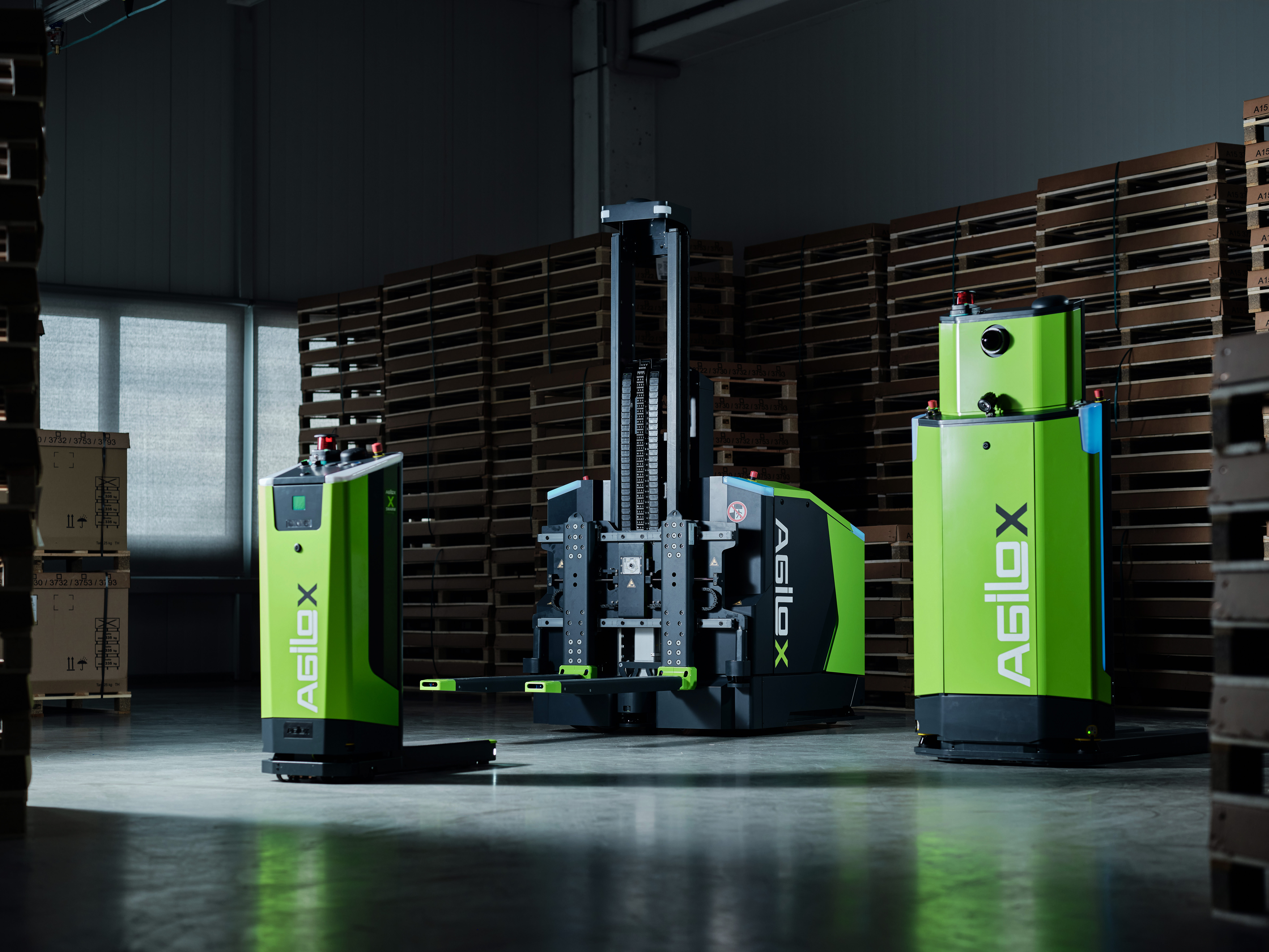Are you responsible for production logistics in your company and are you constantly coming across different abbreviations for different automation solutions in your search for automation options?
Here you will find a brief explanation of which systems are hidden behind the various abbreviations and how they differ:
AGV
The abbreviation AGV stands for "Automated Guided Vehicle. This is a synonymous term for one and the same class of "automated means of transport" that are used to transport materials or products. A basic distinction is made between "automatically controlled" and "autonomously operating vehicles" or AMRs.
Automatically controlled vehicles
In this version of AGVs, the transport routes run along virtual or physical guidelines. The vehicles are therefore bound to predefined and inflexible paths, which further means that, in the case of fundamental changes to internal logistics or changes to the warehouse structure, they can only continue to be used with a correspondingly high level of effort, which is unavoidable due to the fundamental reprogramming in the case of virtual guidance lines or the structural realignment in the case of physical guidance lines.
AMRs
In contrast, autonomously operating AMRs - "Autonomous Mobile Robots" - can determine their own path to the destination and correct it if necessary. This makes them incomparably more flexible in use. In addition, they can be adapted to changing basic structures without major complications.
As an example of the state of the art in the development and production of autonomous intralogistics systems, we should once again mention the company AGILOX, whose AMRs have intelligent features such as swarm technology. Not only does this make them enormously versatile, but the technology enables them to communicate with each other in fleet operations, learn from each other and/or calculate alternative routes. On this basis, in the event of changes, all that is needed is to access a single one of the units via a web application and adjust the settings. The other units subsequently react independently and learn on their own to integrate themselves into the new processes.
This is a brief explanation of the terms and a comparison of the various systems.
That the automation of intralogistics - especially through AMRs - is accompanied by sustainable advantages has already been proven by this brief explanation alone. In addition, the automation of production logistics leads to a significant increase in safety standards and increased efficiency. It also helps to effectively save costs and minimize employee fluctuation.
In this respect, you should download the free whitepaper, available for download here.
There you will get a compact overview of the topic "Automation of intralogistics" and all its advantages for you and your employees.



